Theo Verelst Local Diary Page 41
I've ditched the usual header for the
moment, I think it doesn't help much anyhow.
This page is copyrighted by me, and may be read and transfered by any
means only as a whole and including the references to me. I
guess thats normal.
Fri Oct 12 13:56, 2007
This page and the previous and the next are party written concurrently.
They started at the time stated but were finished much later!
Fortune from Sat
Oct 20 22:06:04 CEST
2007:
Bond reflected that good
Americans were fine people and that most of
them
seemed to come from Texas.
-- Ian Fleming, "Casino Royale"
Lots of pretty and interesting things on this page. But is that worth
living for? Sure, I think that would depend on other factors.
Scart switching
Many people in holland have received a so called media box from a cable
company for free in principle, though some extra channels cost a few
euros extra per month. The box has a video output in scart form (not
cinch) and sometimes the setup I deal with has a connection from beamer
input to a random type video recorder, and sometimes the VCR is
recording from the cable antenna, while the beamer (and stereo or
quadro sound system) is used to look at another channel, which is then
from digital cable channels. And sometimes the VCR needs to record from
the media box.
In essence, I want to switch the beamer and sound inputs from the
output of the media box or the vcr, which sounds simple enough, there
are scart switch boxes to do such a thing but just like an hour lecture
about connecting an amplifier to a driving machine and the onnected
grounding issues, any scart connection can have its peculiarities, too.
First, there are three basic types of possible connections with scart
cables, composite, svhs and rgb, second the connections are defined
such that the driving amplifiers of the signals should have a sense of
balancing or ground level variation management, which usually is solved
by the electronics design.
The third issue was the actual issue, which is signal routing and
impedence and level integrity. Like many pople know, antenna cables for
instance can be split to more than one receiver, but that should happen
with at east a passive, and preferably an active splitter, simply
bacause otherwise the signals in the antenna are dampend because the
connected tv sets all require an amount of power, 2 more than 1, and
the impedance of the cable which is often 75 Ohms is reduced to half
that when two tv's are connected, which causes reflections in the cable.
Anyway I got this cheap switch and some random scart cables, and that
works, but unfortunately it allows the two devices connected to the
switch record each others´ signal, which makes the media box
loaded with two instead of one input, which makes the signal level
lower, and thus the image darker and maybe even non-linear, so because
I like good quality the switch had to be taken of and me again back to
switching cables.
So I thought I´d do a little homework and fix the tracks on the
pcb in the switch box so that cross feeding of the composite signals
would be broken, but instead I probably like often had a different idea
about signal names then the scart video plug manufacturers and read the
signal names as the corresponding output names, while probably they
were input names, so I disconnected the actual signals, and the switch
went dead...
Easy to fix though. Reminds me of the chip samples I´ve prepared
for video routing, but they are a bit hard to solder, even on the
conrad conversion pcbs, and I have only a few of those, and the
smallest footprint part I used on at least one already. It is cooler of
course to do electronically controlled switching, and possibly adjust
the video signal level, either with more switches (on matrix is 16x16,
and certainly better than 4066s) or with some gain controlled buffers
with good frequency behaviour. Why doesn´t the cable company put
out a perfectly max adjusted video signal ? Probably because they want
space to do things with like the audio for some commercials is
extremely loud compared to some programs on some channels.
New small audio design
For easily portable audio amplification, even easier than the smallest
system I made, I planned and started a mini, portable radio sized
amplifier with two (maybe four) speakers in one enclosure, and with
preferably really good quality, and some low too, and again without
bass reflex.
I got these speakers:
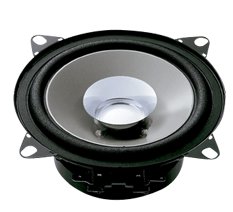
from Pioneer, which are quite small, and thus far I came up with this
case:
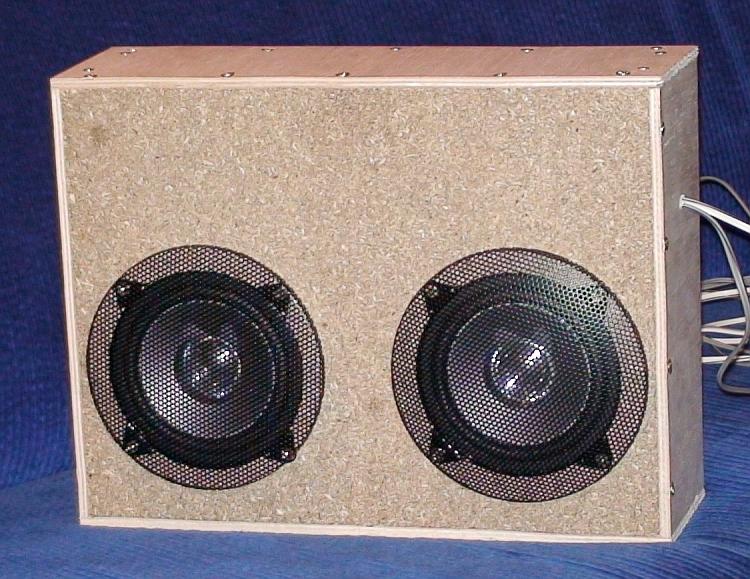
Which is planned to be airtight, it has a 12 mm front plate, and fairly
light triplex sides and back, with (legal) hardwood enforcement rods in
the corners, and full backplane damping with teethed carbon foam.
It needed a few more screws, but it is nearly aritight and all sides
stable, I got more screws but I didn´t completely finish the
woodwork, also because I plan on making it stereo powered, that is that
there are amplifiers inside, which will work on mains, not batteries.
To try it out I used the existing small sized amplifier with heavy
external toroid transformer and a good DA converter to drive it, which
sounded great, even though the size is just like a portable radio,
maybe a bit more heavy, it is currently (without the amp and
transformer) 1.6 kg and has a size of 30x23x9 cm.
I sawed the wood myself with a cheap circular saw, which was a bit hard
to get accurate enough, like usually a woodstore can, but it is
working. The speakers are 20 Watts continuous but 110W a piece maximum
power, and 10 cm diameter, and these pioneers sound neutral and very
nice, except I´m sure I´d better get the little horn out
and put in tweeters. I have the parts for the amps based on the
TDA7294, including a 50 Watts toroid tranformer which easily fits in
the enclosure.
The most energy saving microcontroller
For a fair number of years already Texas Instruments makes very popular
quality microcontrollers of which the MPS430 series are low power
little chips with all kinds of input output options.
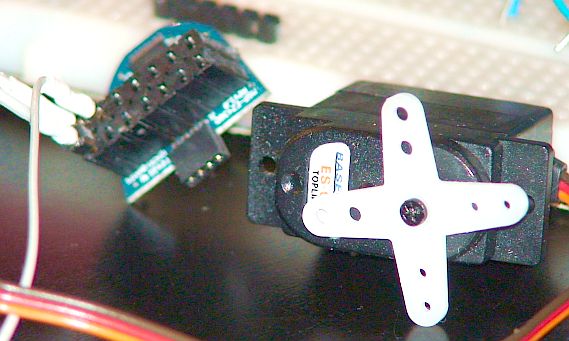
//******************************************************************************
// MSP430F20x2 Demo - ADC10, Sample A1, AVcc Ref, Set P1.0 if > 0.5*AVcc
//
// Description: A single sample is made on A1 with reference to AVcc.
// Software sets ADC10SC to start sample and conversion - ADC10SC
// automatically cleared at EOC. ADC10 internal oscillator times sample (16x)
// and conversion. In Mainloop MSP430 waits in LPM0 to save power until ADC10
// conversion complete, ADC10_ISR will force exit from LPM0 in Mainloop on
// reti. If A1 > 0.5*AVcc, P1.0 set, else reset.
//
// MSP430F20x2
// -----------------
// /|\| XIN|-
// | | |
// --|RST XOUT|-
// | |
// >---|P1.1/A1 P1.0|-->LED
//
// L. Westlund
// Texas Instruments Inc.
// May 2006
// Built with IAR Embedded Workbench Version: 3.41A
//******************************************************************************
#include "msp430x20x2.h"
void main(void)
{
int i, j, max, max2, val;
WDTCTL = WDTPW + WDTHOLD; // Stop WDT
ADC10CTL0 = ADC10SHT_2 + ADC10ON + ADC10IE; // ADC10ON, interrupt enabled
ADC10CTL1 = INCH_1; // input A1
ADC10AE0 |= 0x02; // PA.1 ADC option select
P1DIR |= 0x01; // Set P1.0 to output direction
P1OUT &= ~0x01;
for (;;)
{
// __bis_SR_register(CPUOFF + GIE); // LPM0, ADC10_ISR will force exit
// if (ADC10MEM < 0x1FF)
// P1OUT &= ~0x01; // Clear P1.0 LED off
// else
// P1OUT |= 0x01; // Set P1.0 LED on
for (j=0 ; j<10; j++) // 40 Msec (guessed)
for (i=0; i<255; i++);
val = ADC10MEM;
max = 1023-val;
// max /= 10;
max2 = val;
// max2 /= 10;
ADC10CTL0 |= ENC + ADC10SC; // Sampling and conversion start
for (j=0 ; j<1; j++) // 20
for (i=0; i<max; i++);
P1OUT |= 0x01;
for (j=0 ; j<1; j++) // 20
for (i=0; i<max2; i++);
P1OUT &= ~0x01;
}
}
// ADC10 interrupt service routine
#pragma vector=ADC10_VECTOR
__interrupt void ADC10_ISR(void)
{
__bic_SR_register_on_exit(CPUOFF); // Clear CPUOFF bit from 0(SR)
}
The head of AES
What is with that AES organisation ? Well, it´s the (america
based) worldwide Audio Engingeering Society, for promoting good audio
or so or anyway its a society which organizes events for audio
engineers and such to meet.
I went to a tutorial of Ron Streicher on stereo techniques, in Utrecht
this year in the La Vie conference centre, I gues I saw it more as a
lecture, and in fact I drove him back to Amsterdam with me because I
happened to have come by car, which was cool.
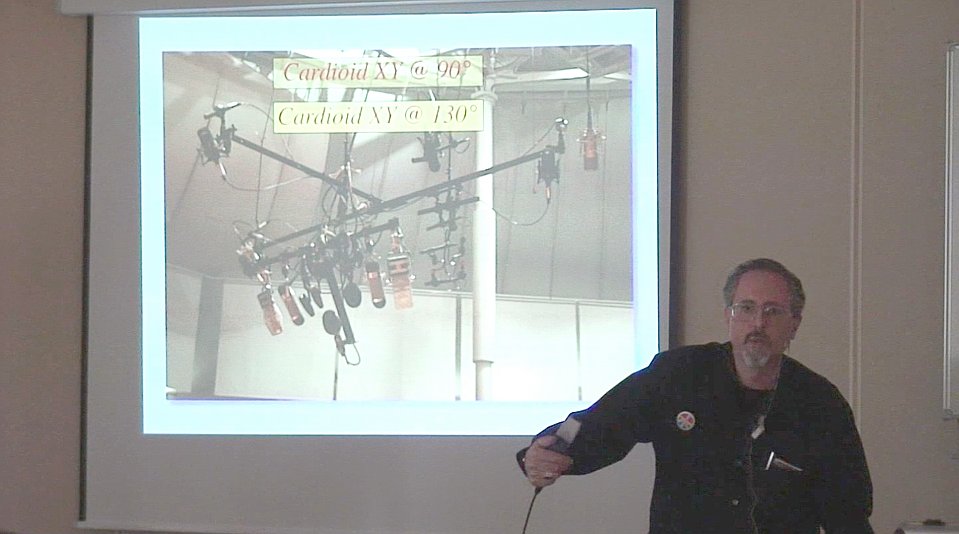
This is a picture taken during the lecture
of Ron Streicher (if I´m not mistaking the previous global chair
person of Aes) in Utrecht in spring this year called "Stereophonic
Techniques". I´ve made a small 3.5 megabits per second 720p HD
recording of the end of the talk available:
quicktime .mov format
(26 MegaByte file) (should run
in Qt player, let me know if it doesn´t)
general mpeg-2 .mpg
format (29 MegaByte file) (I can use this to play perfectly
with Pure Video HD)
The audio has been processed which was only a tryout. And of course
3.5mbps is extemely compressed
for HD video, so during motion things are far from perfect. The original
would be hundreds of megabytes of mpeg2 25mbps to download which would
be very unpractical, but THEN things look good all the time! The noise
which is in the background because the room had dimmed light I tried to
process out, too, which can work to an extend, but I wasn´t all
satisfied with adaptive filtering using the wonderfull Cinelerra FOS
video processing program, so I tried extensive blurred edge detection
layer and a small delta T frame to frame comparison adaptive filtering
measure to detect the screen area to get filtered, even during a zoom,
and then an adaptively filtered layer with both absolute and standard
deviation adaptiveness, all in 32 bit per component floating point RGBA
colour space. I got results, and sure a lot of the background looks
good then, but perfect it didn´t get to be yet, so there is room
for improvement, and it is fun to try these advanced image processing
methods out on 2k material, and with overseeable processing times like
a frame per second.
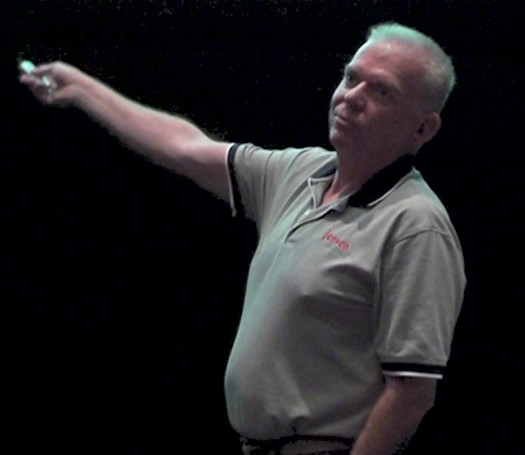
Bill Whitlock (above) has recently given a talk (that´s a Delft
Uni type of statement) about Audio Signal Grounding in Amsterdam, of
which I HD filmed a bit, in this case I wanted to make 480p Dvd
broadscreen format compressed result, where preferably with very low
bandwidth the screen could still be read:
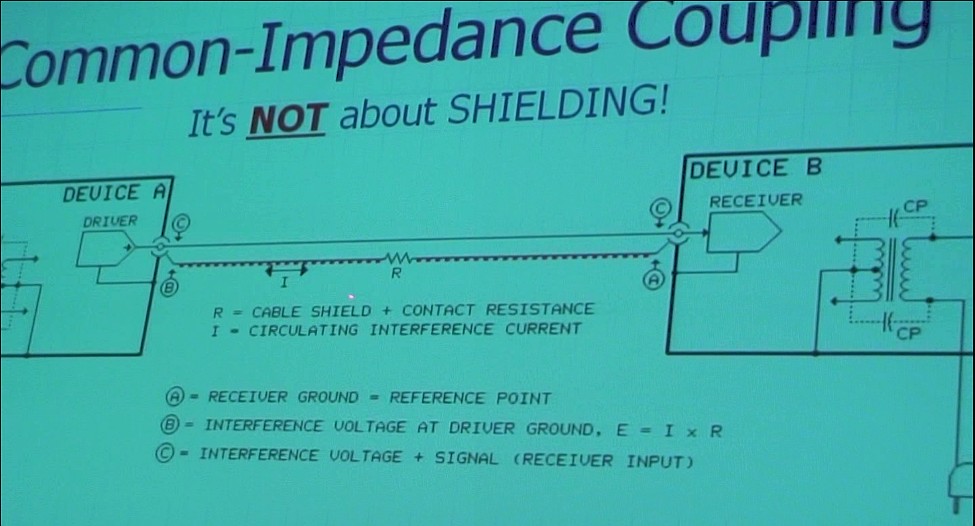
from the original HD produced in the camera (a Sony HC3 doing 25 mega
bits per second mpeg-2 with 320 kb/s audio mp3) that is no problem when
the result is viewed with a capable viewer (for instance a Dell M90
notebook I use with WUXGA screen (1920x1200 which is 1090HD+) with
Nvidia´s Purevideo hardware video and mpeg2 decode acceleration),
but then the 23 minutes file I have is gigabytes in size which is not
practical enough at all over the current internet. Time for dozens of
megabits upload and download Mbone, guys ? Well, I´m not sure
that would solve the world´s problems but it sure would be even more fun than the 1
megabit/sec up and 8 down Adsl I get to use at the moment.
For the moment for realtime uploading of a film from the server to
somebody wanting to see it can be at most at about a megabit per
second, which is already great of course, T1 from a little zyvex. I
made a few versions of the material, maybe I´ll make some others
later on:
Bill Whitlock in mpeg-2
23 minutes of the
talk A (some new codec) & V
(177 Mega Bytes, takes at least over 20
minutes download) about a megabit per second
Bill in a bit higher quality
mpeg-2, but no sound (1:54
test)
Bill in mp4 which plays
in quicktimeplayer but no sound
(idem)
Maybe I´ll update this later on because the audio of the first
file don´t work in my windows media player with Purevideo though
it is there, the other two are quality tests which come from a better
video preprocessing step. To make the little film more web-faehig I
used a satellite type of encoder first (h265) to correct some motion
aspects and generally reduce bandwidth in a neat way (certainly for
lectures) and then a mpeg-4 transcoding step to make the whole more
cinematic in character and reduce some motion related bandwidth, too. I
prefer to have the results in mpeg-2 Transport Stream format because
that is probably the most general and widely used, and most of all
because then I can use the excellent Purevideo to view the result on a
HD screen which really works and looks great (totally without any artifacts when the material is
high grade).
So the resulting mpeg2 can also be used: it has progressive information
in it and of course at 1mbps is fairly low bandwidth for full DVD size
video, and can be shown on a bigger screen than standard 480x640wide as
it is coded, and will then show more detail and still quite bearable
motions, and of course in this process there is no hand-wise processing
or drawing or tweaking of frame parameters or so, just some ffmpeg unix
commands on a row (preferably on a fast processor like the Athlon
3.3GHz/64 I use with Fedora 7/64 as OS) and then the results are tested
in various ways: a simple software based player (like quicktime on
windows, or winamp with video, or realplayer) which can play this
format on a fairly fast machine of nowadays easily enough, a more
advanced player (like mplayer on windows and linux), also in full
screen mode, and on various screens, and finally the purevideo
accelerated windows media player (it only works there yet...) which can
blow up to HD in perfect quality, and also to 720 HD (1280x720 pixels)
which I viewed at a Mitsubishi HD1000 beamer of such resolution to get
an impression what the fast (DLP based) and perfectly decoded (hardware
based up to at least perfect 1080 HD) signal path would show me to be
in the processed film, and of course how it looks on the BIG (106 inch
16:9) screen! Well, it looks quite bearable still, in spite of the very
low bandwidth, and the quality of the colours and light is fairly ok
too it appeared. When set up right (almost neutral settings) the 1500
lumens on the 1.5 reflecting pro grade screen of the projector in the
test space are close to reference accurate according to various tests,
and so when material looks neutral and attractive on it, it probably is.
Of course the pristineness of the original HD recording reproduced the
same way isn´t really the same anymore, but still for a
demonstration the result looks viewable and nice, and the motions are
quite natural still a 1mpbs.
Oh, I used Heroine´s or in fact the sourceforge version of
Cinelerra (which I also used to preview and write the h264) to process
the audio a little bit, like a AVC so some airco noise or so is audible
when all is quiet.
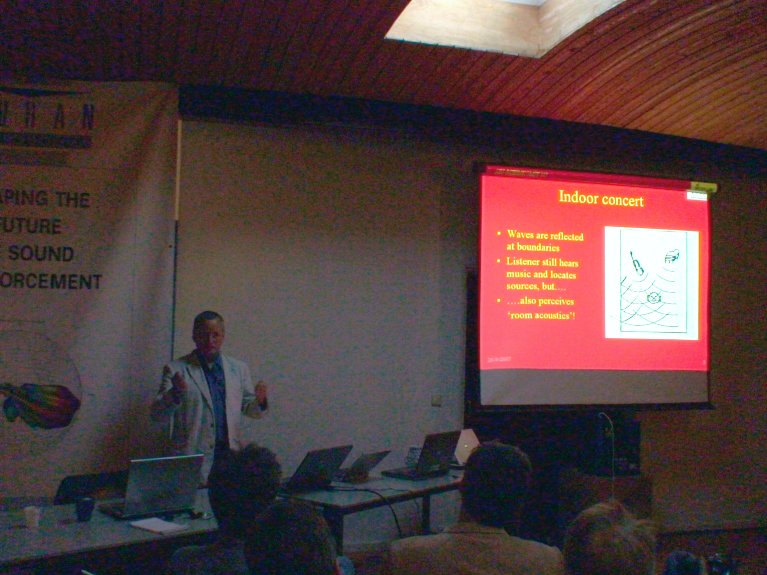
"Shaping the future of sound re-enforcement"
!?
I doubt it. Makers me think back about researching, designing and
applying in possibly nervewrecking practice a stage play / musical
stage amplification system in highschool, when I was the leader of the
technology group for years (after having been active member years
before, for instance with the school band) where whispersoft acting and
fairly loud music had to be amplified, and in high quality. At least
that´s what I aimed for and got. Included good quality (1984)
front and mid hall speakers and amps (yamaha / bose in front, big
Technics mid), various static microphones (amoung which a couple of
Senheiser MD420s or was the 30s) and then acoustics designing the whole
such that feedback and audio quality would be great, which could be
heard on a seperately made recording at the time, of which hundreds of
quality audio cassette copies were made by me (with added cassette
decks of some pals) at the time.
Well, that was about setting the system just under just not feedback,
making sure no resonant modes are in the way, making sure speaker
placement and direction is good, floor boards on stage are damped, the
audio signal path very decent at least, cables being shielded against
the very present hum of the dimmer pack and connected lights being used
tone controls and combination of front and mid hall speakers set to
sound neutral and open, and of course the whole hall (a decent gym
actually) with the audience in place should sound ok reverberationwise.
Very hard to keep the noise down while keeing volume and
intelligibility good.
No DSP theo ? Nope! Usually that is for people who believe too much in
magic, at the time there wasn´t so much around of that yet, we
just had the CD player, although the same year I bought a Korg Poly 800
with modulatable digital delay built in, and honestly even now you have
to do a good job to get good enough quality digital effects to work
great live, honestly, a lot of it plainly sucks and is more of a pain
in the behind than a great addition to the audio chain, like I found
when doing (in that case playing the synthesizer) a rock performance in
france (see other page) and the PA system suddenly started to 'amplify'
basses I´d played maybe half a minute ago in a loop or so...
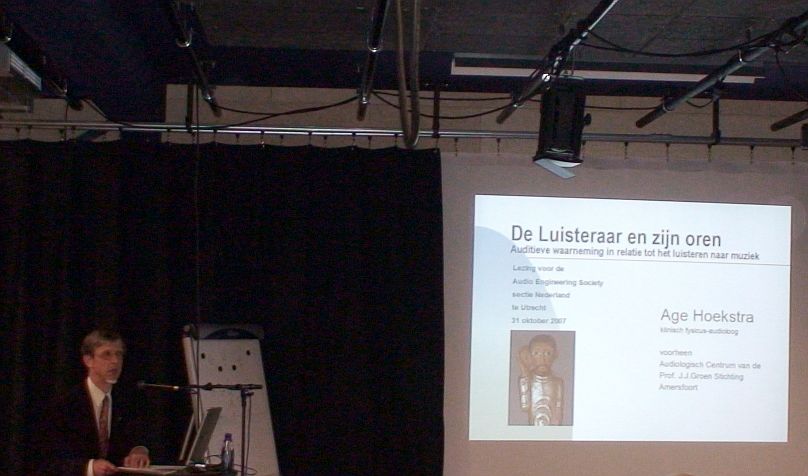
The listener and his ears, Age Hoekstra
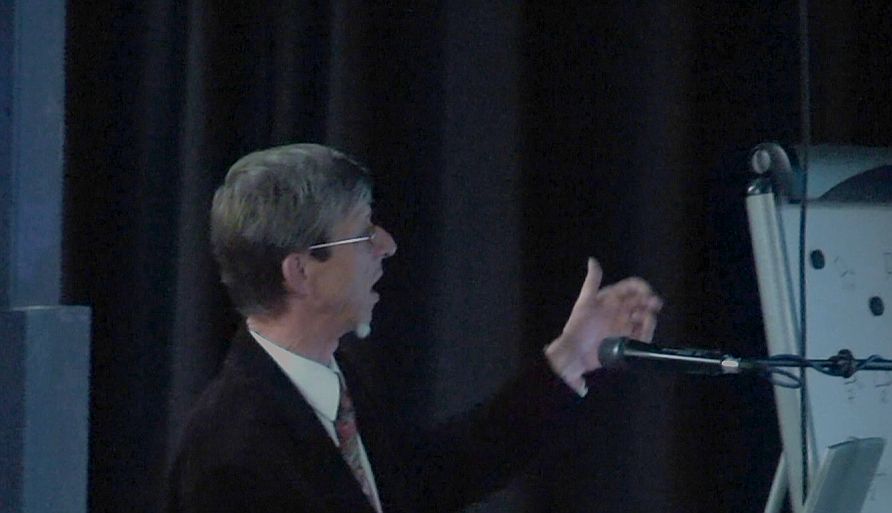
Qt4
Trolltech for some time has beenknownfor their userinterface product,
which is quite extensive with version4, and is fairly well known, also
in Linux land. It's a C++ library for all kinds of UI elements for most
computer platforms, and it is also available as Free and Open Source
product.
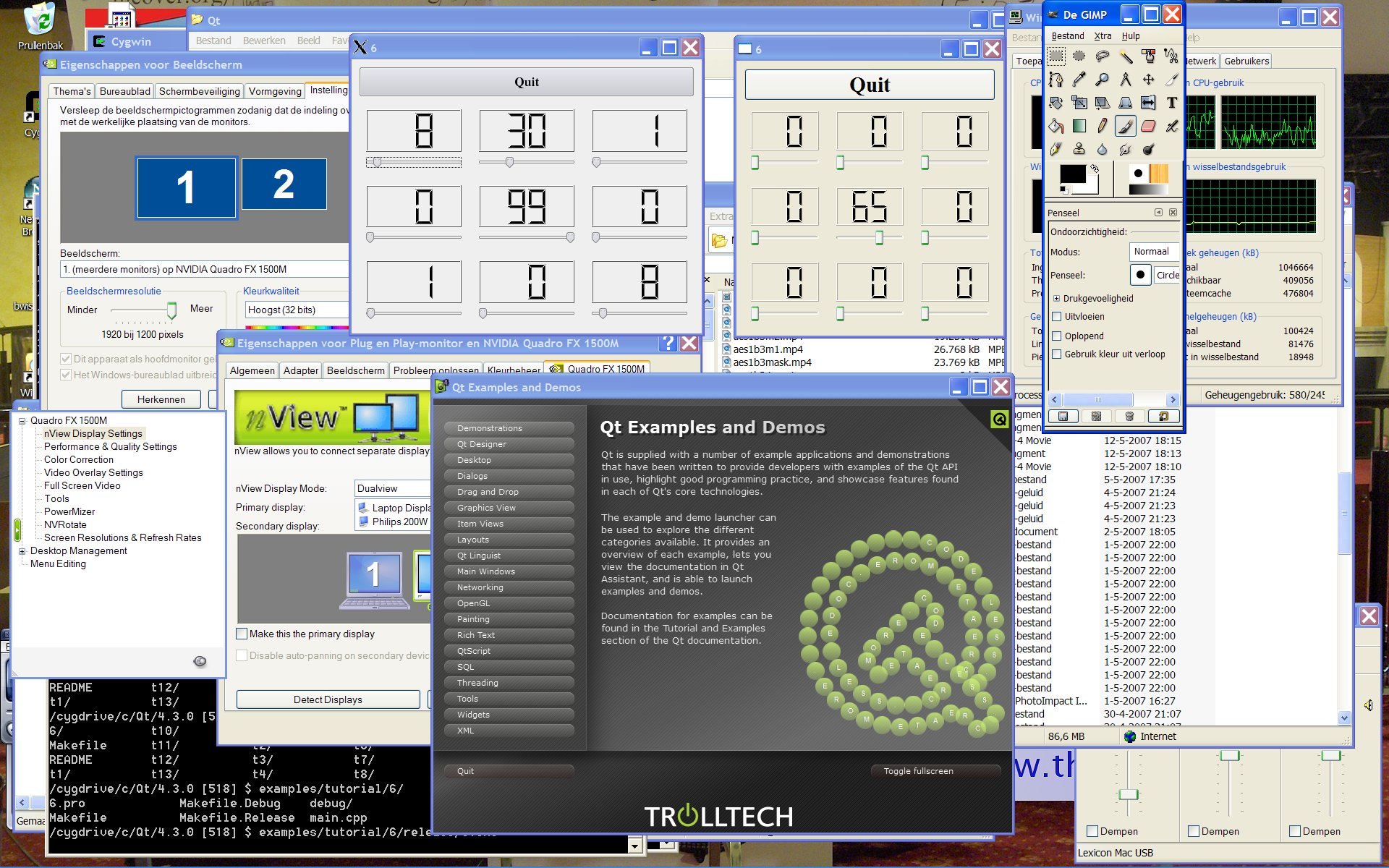
Screendump of full 1080 HD + some screen
showing linux (fedora 6/64) and windows (XP pro with cygwin/Mingw) Qt
examples
Believe it or not but I compiled the whole of Qt4 including all the
examples from source! The above screen shows some of the results, I had
a pre-compiled (free) version for Fedora linux so that was easy, but I
thought I´d compile the windows version myself, well anyway to
let the mingw gnu CC do the job of course, and I used the excellent
cygwin environment as shell. That has to be set up right, but works
fine enough, sort of like Linux command line on windows XP pro (SP II
iirc).
In the above screendump (which has no tricks or image processing in it)
two of the example windows are shown, one I compiled (the example that
is, not Qt) on Redhat Fedora 6/64, and I ran it on the athlon
3.3GHz/64bit server machine but with its window redirected to the X
server running on the XP machine so the user interface becomes visible
on the notebook screen while the program runs on the linux server. The
other was compiled and Qt enabled using the same mingw compiler setup
under cygwin bash that compiled the whole of Qt, including Designer!
And that too works good, so it was a succesfull experiment which could
give good hope for the future that UIs can be well made for linux and
windows.
Beware that the big demo window was really compiled totally from source
and works without error! (You´re lying now, Theo, we IT boys
decided you just cannot do such a thing...) No, really.
There was one thing though, that if I recall correctly while writing
the text with the images on this page the opengl things were not there
on linux, or maybe the other way around, but this window I copied looks
like windows XP style, and it has working GL in it:
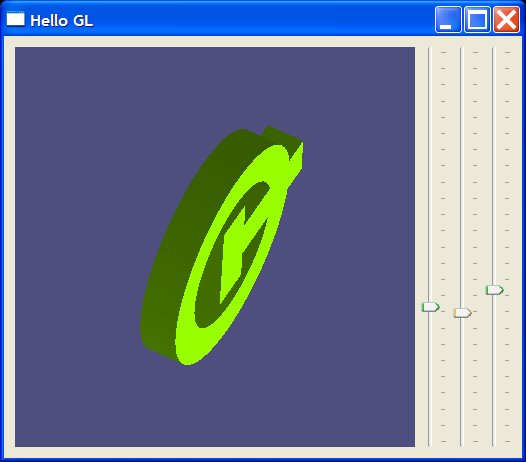
Well, it is a great idea, but I felt right at home at the Atari ST
Resource Construction Kit and 180 kilobytes of graphics and OS Rom
libraries, and here it is like a lot of things are made in the time of
the decline of the new age: a lot of things there in not really a great
ordering, and not so much interesting new things, though opengl in the
UI is cool, and lets not forget for non commercial purposes it is Free
and Open Source, and a portable hip looking UI kit, which is great
anyhow.
Light Mixing
Strange terminology, but it refers to the 'mixer' devices which
actually drive lights with faders. Ever do that? Back in highschool,
when that was still pretty hip (new) I went talkingto some (startup ?)
company in the Hague city to see what they would have for the budget
and some time later a system was bought and I installed it and
supervised its use for an important stage play.
In fact at the time I had years of experience of building and playing
with light organs myself, using car-lights and thyristors with a few
hundred watts of transformed power (12/24 volts) which I had learned to
drive well even with digital logic (TTL mostly). I knew about the
disturbance signals, digital seperated from the many Amps of drive
current and even about inductive loads and experimenting (it was a
hobby) without blowing up 3055's and thyristors (bit hard) and their
drive circuits and especially keeping the main lamp drive voltages and
currents away from the sensitive digital electronics, because the whole
ttl experiment boards (breadboards with DIL chips) would blow up easily
if only one loose drive wire would touch something there, or if the TTL
level converter would blow up....
Well, this is only a humble hobby project with a fun Velleman kit,
meaning its a box with parts a printed circuit board and a manual to
construct the light dimmer. Especially it has a voltage control input
though not exactly with linear response, and the preprogrammed PIC
microcontroller doing the pulse width modulation through driving of the
obligate triac has clear steps in its response, which makes the result
of the circuit not directly usefull for the slow and supersmooth light
dim action I had in mind for the home cinema space.
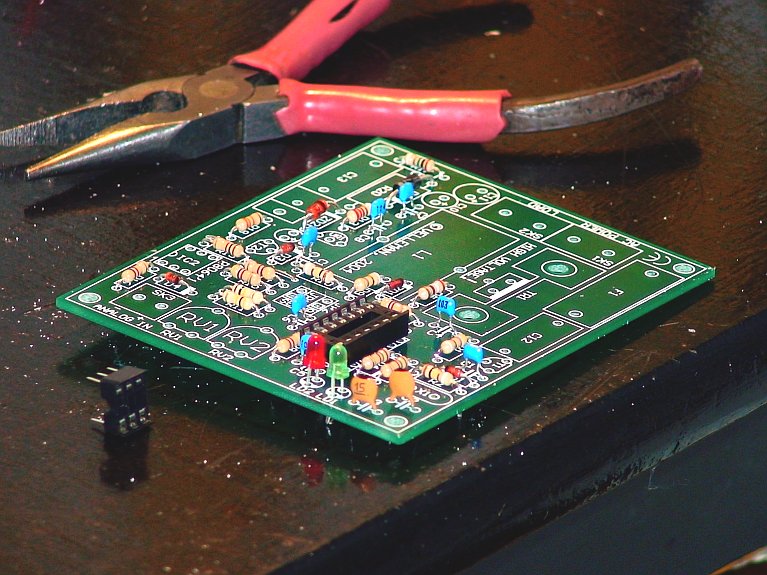
An 800Watts voltage
controlled light dimmer (Velleman) kit in buildup
Well, it does work, and the PIC is in a socket, so I could replace it
with a small MSP430 board of TI and program such a microcontroller to
do the job better, or stay witg goodol´ electronics thinking and
do it analog...
The opto coupler at the input is needed for galvanic seperation which
makes of course the voltage sensitivity non-linear and with non zero
threshold voltage, and as experimentalist it is of course nicer to hve
the control circuit seperated from the mains instead of with a
capacitor voltage divider on the hot wire and drive the triac with a
optocoupler. The circuit does work though it dims a lot of halogen
lights and should be up to 800 Watts even. I tied a long low voltage
wire to the controll input leading to a small rechargable battery pack
of 4 penlite NiMh cells and a potmeter which sends a variable voltage
to the board, so the dimmer is remote controlled with a wired unit
which has a normal dial control, and that works ok. Maybe I could
offset the controll voltage to the ignite voltage of the opto coupler
LED.
Of course my intention was to make it remote controlled and operated by
computer or the linux with tcl Fox Board which is in my computer
controlled analog mixer prototype. Maybe I should make that a kit and
join schmartboards in CA...
More processed pictures from HD
Is that any fun, taking pictures from High Definition video recordings?
It´s a way to look at stills and try them out in various ways,
and because the quality of the HD can is so good, as in the lense
system and the CMOS sensor and the 14 bit processing, great pictures
can be made, and the moment of actually choosing the picture is free
after the recording of the movie, as long as the camera or subjects
don´t move to much, because then there would be motion blur and
interlace problems reducing the quality of the picture, but that also
happens with a normal photo camera of course.

Barbara walking far
away (zoomed) in the reservation dunes near the dutch coast
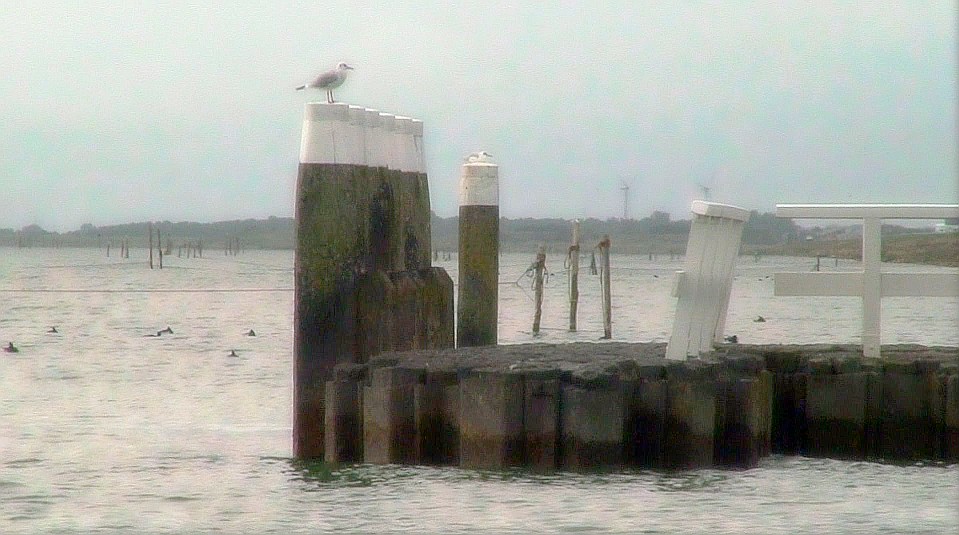
The IJsselmeer in the summer
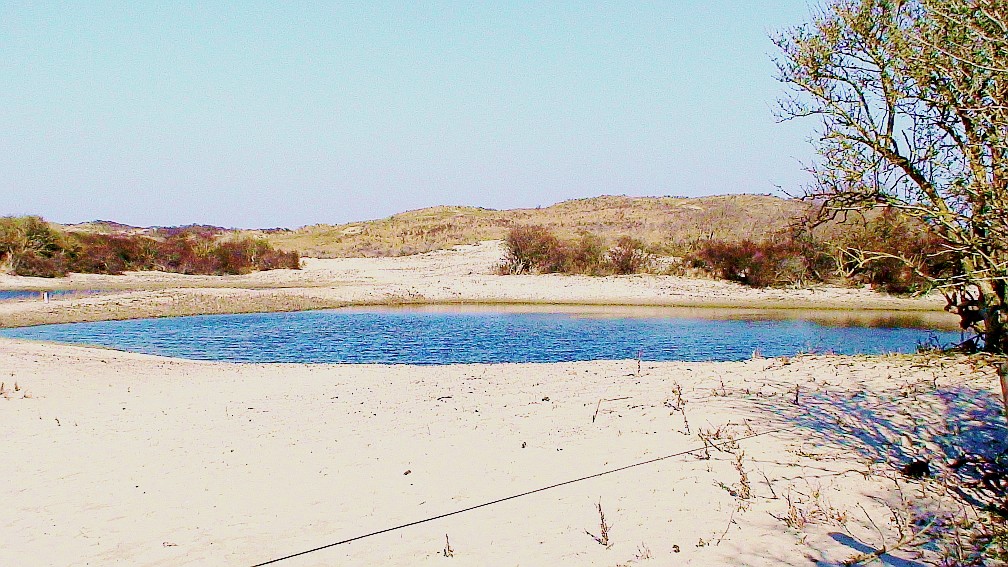
A pond in the dunes near Wassenaar,
probably water purification

Roadside in he north of holland
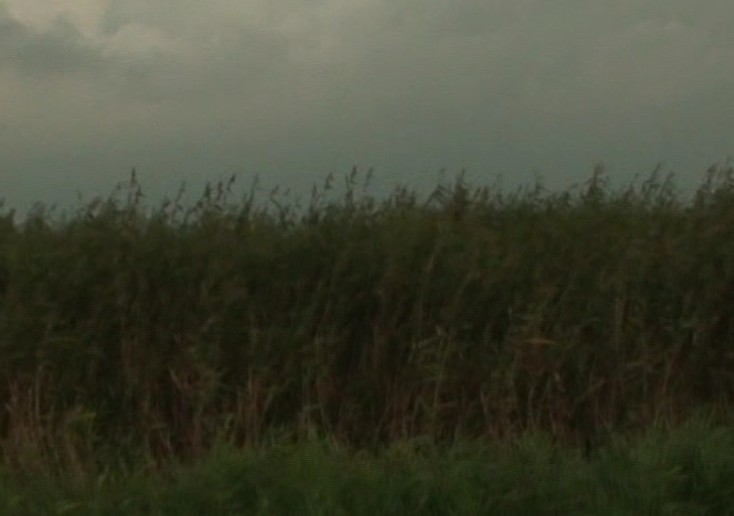
Portion of the above in
original 1080i HD resolution
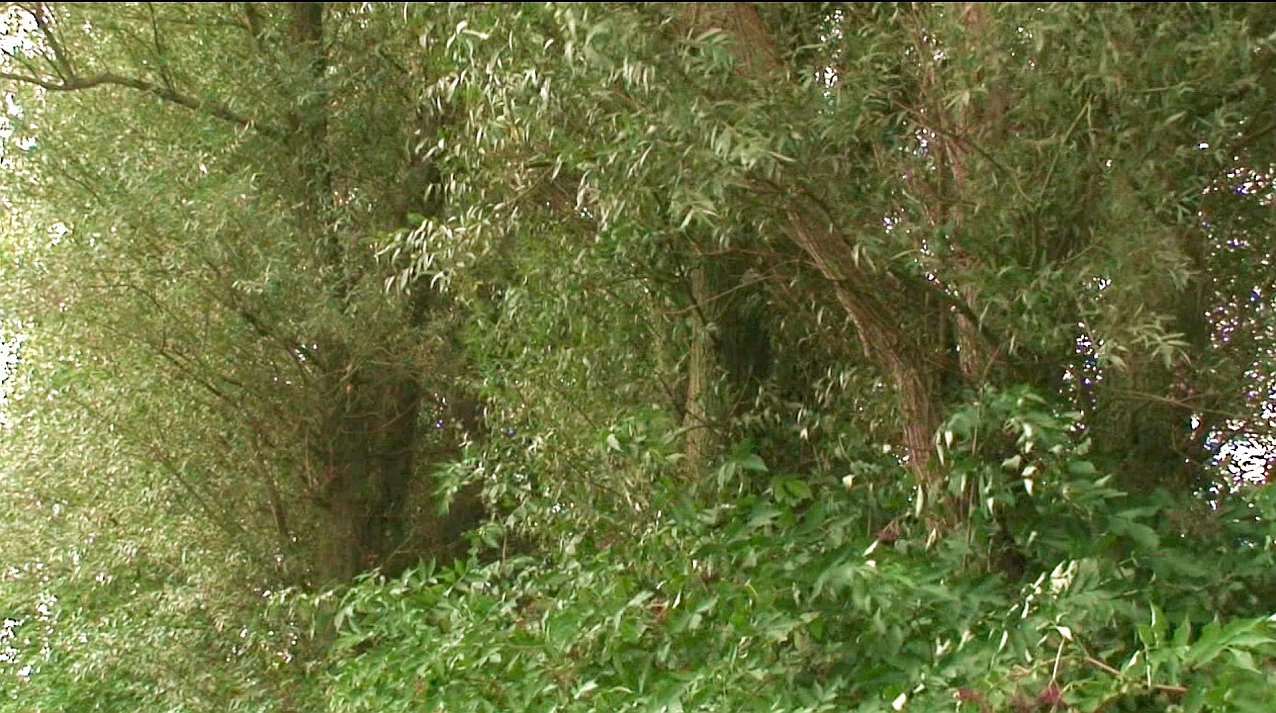
Trees there

Amsterdam harbour, autumn 2007

Same harbour, a very strong but rusted chain
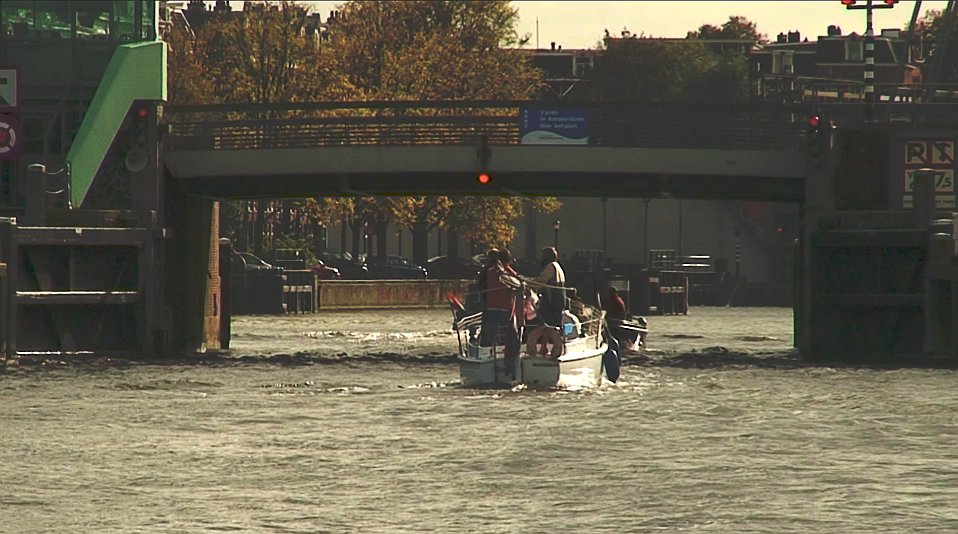
Idem, very zoomed in
REALLY, THESE IMAGES ARE FROM HD VIDEO
FILM!
The first picture is taken from HD 'footage' with hand-held (!) camera,
and quite processed, including adding partial equalized and filtered
postered components, and colour correction and gamma corrected.
I´ve printed a A4 size brilliant HP photopaper version of the 2k
(about 2 megapixel) version of the above, which looks very good.
All above pictures under this heading are from HD video, and all were
scaled down to 50% or 2/3 because most people will not have huge
1920x1200 monitors to look at, and using more than 8 bits per pixel
works better on a downscaled image of course, so without conditional
filterering (hard on moving images) there is some more HDR information
to base further processing on, giving better results. It is not so that
the (almost) 2k 16:9 images are not processable, in fact some of them
look really good, but in this case I tried some smaller sizes, which I
think is interesting to take from film.
It would be possible to process all frames of a scene like above,
possibly in full resolution, or maybe brought down to 720 HD, (or maybe
768) and have moving pictures of such quality. At times I´ve done
quite some processing with Cinelerra, and I can also use pinnacle
studio 10.5, but usually not in such a pictorial way, and honestlly I
liked better playing with the motion and cinematographical appearence
on the beamer than this sort of embellishment, but cinelerra can sure
process colours and brightness and contrast and sharpness and
equalisation and all kinds of filtering at lets say at least a few
frames per second, and in 32 bit floating point per component, so it
should be quite possible. If really necessairy, cinepaint, which I used
for the above in 16 bits per colour accuracy, can be driven by a
script, I´ve even once for the GIMP, which has similar scripting,
cooperated with a tcl script to drive drawing operations, so the above
results could be automatically obtained for a lot of frames in a row,
but I´m not sure how easy that is.
Below there are some of the same images from HD frames as above but
brigthened, smaller, and sharpened.



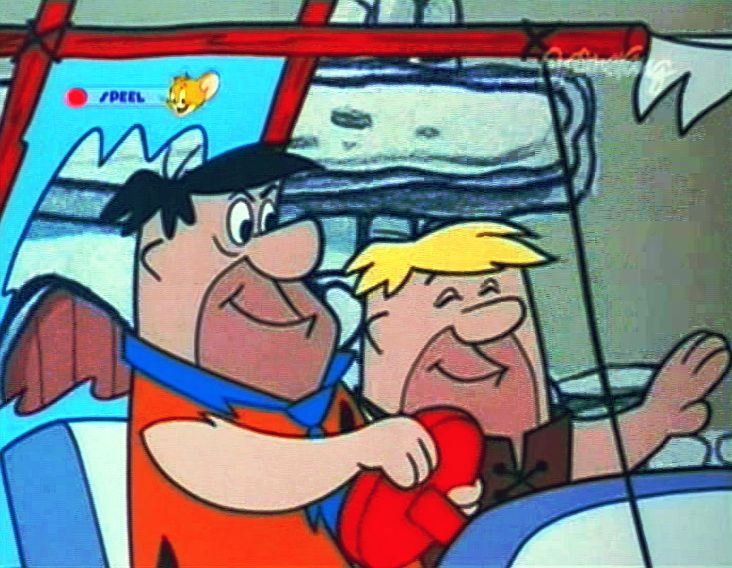
(Just trying out how nice the colors are in these classics)
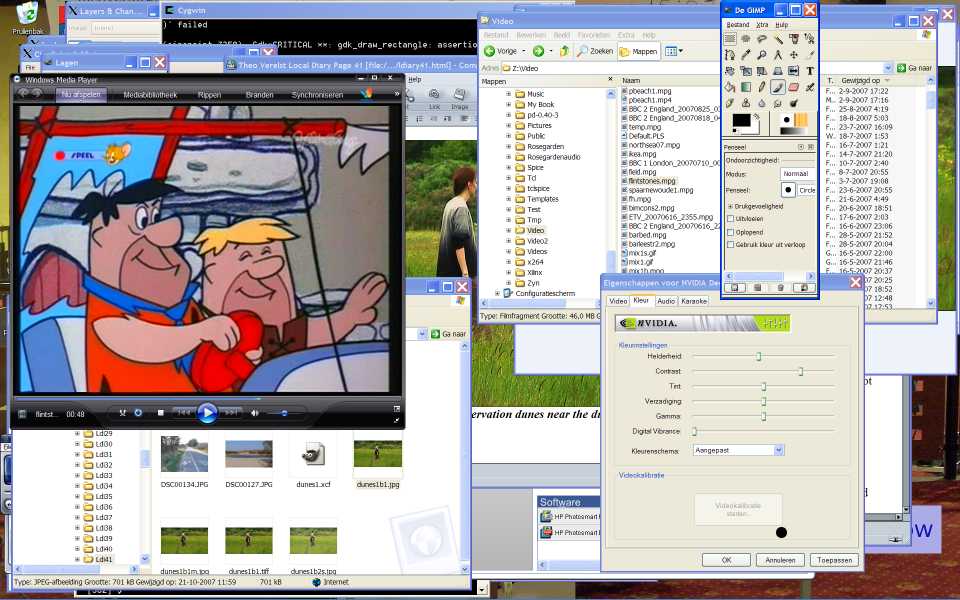
This is a small version of an HD frame from a HD video shoot I did from
a car while having a pair of AT2020 microphones with me and a notebook
to do audio recording near a place where boats pass. It rained half the
time so I filmed and recorded a bit from the open window:
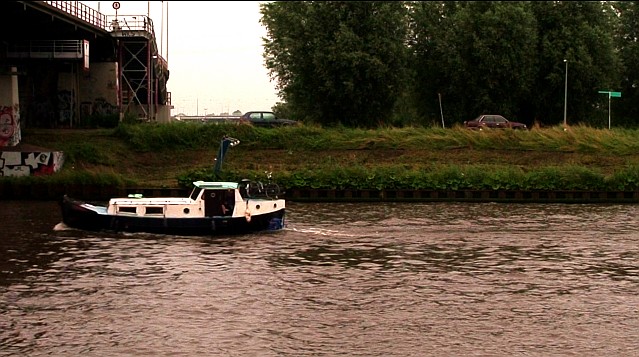
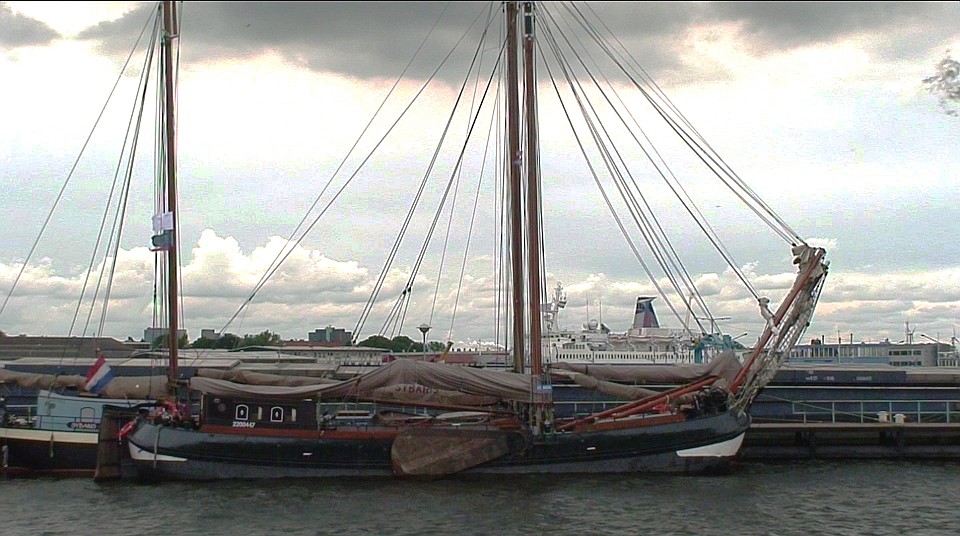
Harbour Amsterdam, south side
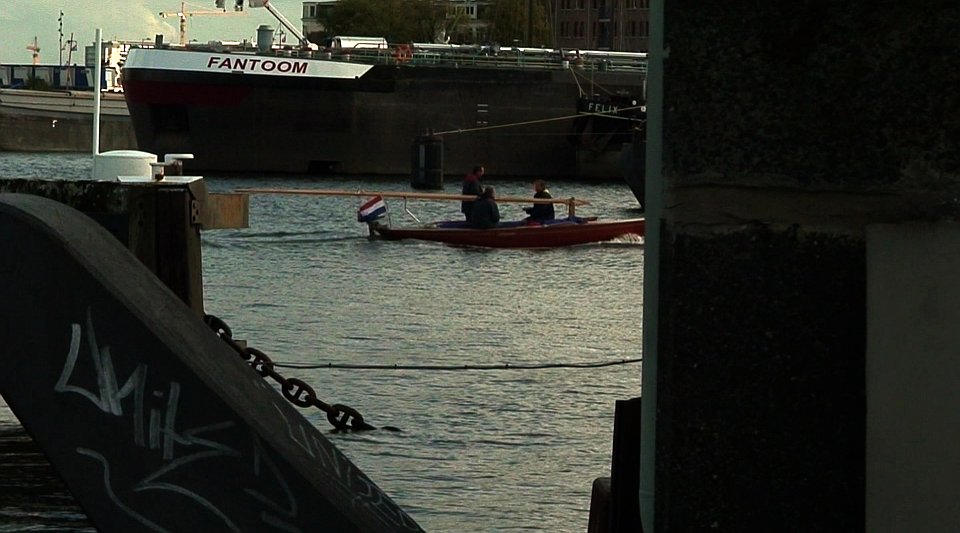
Idem
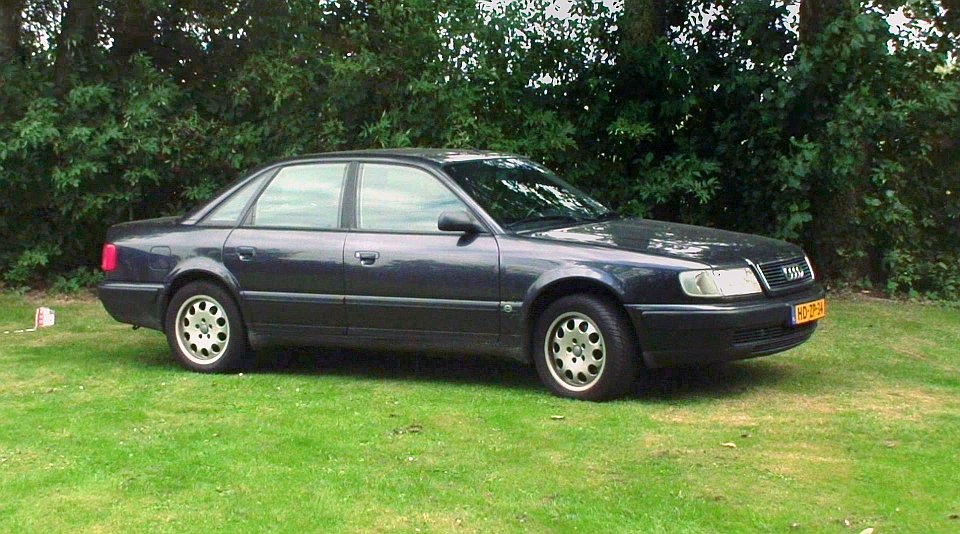
Car in Fryslȃn
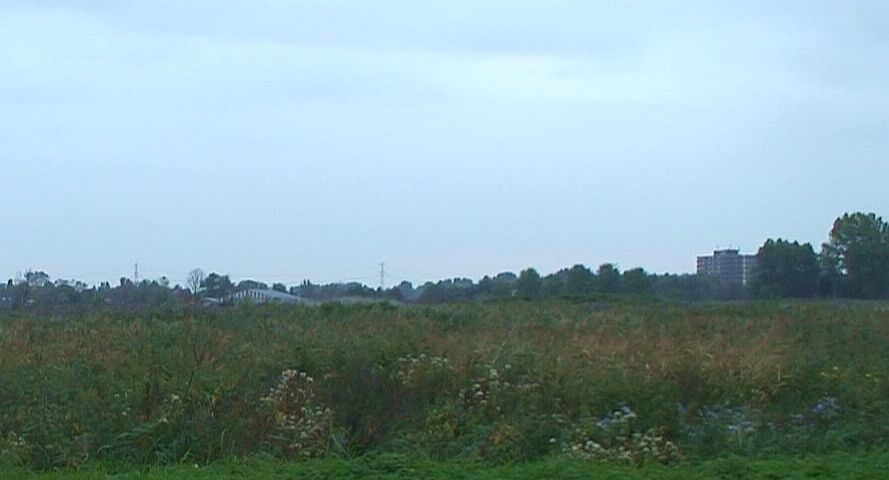
Some green land in Amsterdam
As I wrote, all the above pictures were taken from film (HD video)
recordings, not
with the still camera mode, but as screendumps from PureVideo / Non
overlay (high quality)
mode from windows media player. Processing was in this case done with
Cinepaint (in 16 bit integer or 32 bit float per component) on Linux
(Redhat Fedora 7/64) running on a AMD athlon 64 at 3.3 GHz on either a
1680x1050 Philips Brilliance 200W screen, or remotely on a 1920x1200 X
server screen, which works good.

Just after the upgoing bikepath in the
dunes at Wassenaar, the Hague
I knew this path when I was starting to bike some distances as a small
kid and later on my own with friends and girls, it´s still
comparable it seems, but the 70s effect is only slowly returning.
What is this, my personal picture book? Not so, some things are
personal, others are not.






























